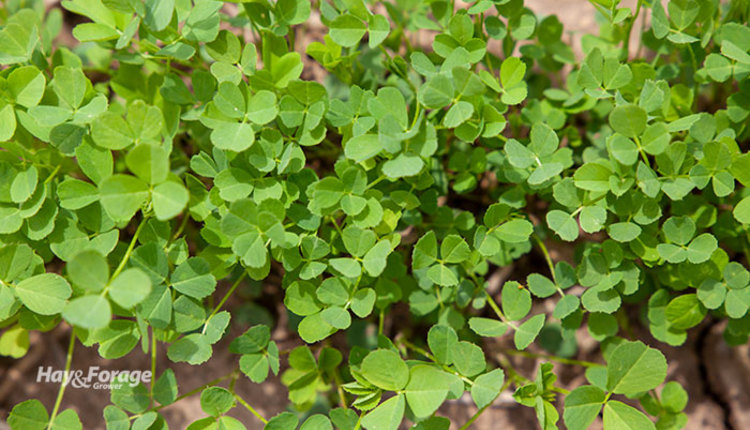Have a plan for no-till seeding success |
| By Mike Rankin, Managing Editor |
|
|
 Some forage producers have mastered the art of no-till forage establishment while others have not. As with any forage seeding, planting depth is critical, and successful no-till forage establishment often requires some advanced planning. “Existing vegetation needs to be totally dead,” notes Sjoerd Willem Duiker, an extension soil management specialist with Penn State University. “Forages are not aggressive starters, so existing weeds or sod may easily outcompete the young seedings.” Willem Duiker prefers not to seed into heavy residue cover, as it becomes challenging to get good seed-to-soil contact and depth control. The best scenarios for no-till forage establishment are after a small grain harvest where straw has been removed, or after corn silage or soybean harvest. It is difficult to get a good forage stand after a corn grain harvest where there is heavy stover. Make sure that chaff and residue from the previous crop is spread uniformly. Willem Duiker explains in a recent blog post that a common cause of failure with no-till forages is when swaths of heavy residue exist next to areas without residue. This situation makes it difficult to achieve an optimum seeding depth. Before seeding, make sure that a previous herbicide application won’t be responsible for injury to new seedling growth. Follow herbicide rotational restrictions, Willem Duiker reminds. Not all drills are equal “Obtaining an excellent no-till stand is now achievable with a variety of quality no-till drills on the market,” writes Willem Duiker. “But there is more to it than just having good equipment. You need to plan ahead by choosing the right species for your conditions, getting your soil fertility right, controlling previous vegetation, and residue management,” he adds. The extension specialist suggests farmers choose a no-till drill that is suited to the plant species being seeded. The drill needs to be able to plant the seeds no deeper than 1/4- to 1/2-inch deep, so good depth control is essential. Forage seeds have only small energy reserves and planting too deep will have them “running out of gas” before emergence from the soil surface. “Some drills have a depth control wheel several feet behind the opener disks,” Willem Duiker explains. “This can cause problems if the field has some unevenness because the depth control wheel may be in a small depression, causing the disk opener to dig too deep into the soil, or on a tiny hill, causing the seed to be dropped on the soil surface.” The seed drop tubes from the forage seed box on many drills typically drop the seed behind the disk openers instead of between them to avoid planting too deep. The press wheels then press the seeds into the soil. Drills that have a depth control wheel next to the opener do a more precise job of maintaining a constant seeding depth. “It is good to occasionally see a few seeds at the soil surface after planting; that means you are not planting too deep,” Willem Duiker notes. “It is also important to check that all seed tubes are connected and not plugged.” The extension specialist suggests checking to ensure the metering system is functioning properly. If light, fluffy seeds such as smooth bromegrass or warm-season grasses are being planted, use a drill with agitators inside the seed box to avoid seed bridging. You also need large-diameter seed tubes for these seeds to avoid clogs. A final option is to mix the fluffy seeds with another seed type such as oats that will help keep seeds flowing. Finally, Willem-Duiker says to be certain coulters and disk openers are in good condition, check for wear, and make repairs as needed. No-till forage establishment offers many soil conservations benefits, but it also helps to conserve moisture near the soil surface. This helps ensure a uniform seeding depth and allows for fast seedling emergence. |
